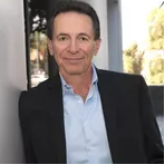Last week marked the two-year anniversary of the current bull market, with stocks gaining about 60% since the October 2022 bottom.
Historically, most bull markets make it to the end of year three but returns tend to moderate.
I have seen many bull markets over the last 60 years, and in most cases, the markets DO NOT accommodate the majority. Although I agree that many stocks and indices are extended, what stands out to me is that a large majority of bright technicians are calling for a top.
Most current evaluations have limited room to increase further, so earnings will likely need to carry the heavy load if markets are to build on their gains. As the third-quarter earnings season kicks off, I will need to see more signs of earnings broadening that can support the recent leadership rotation.
Two years ago, on October 12, 2022, inflation was above 8%, the Fed was in the midst of a historically aggressive rate-hiking campaign, and the S&P 500 had dropped 25% off its high. However, as is often the case, widespread pessimism at the time gave way to a new bull market, which continues to this day. Since then, stocks have gained 60%, and the S&P 500 has reached 45 new record highs.
𝐇𝐨𝐰 𝐟𝐚𝐫 𝐡𝐚𝐯𝐞 𝐰𝐞 𝐜𝐨𝐦𝐞?
U.S. large-cap stocks increased 24% in the first year after the October 2022 low and gained another 35% in the second year, which wrapped up last week. While the combined 60% gain may seem excessive at first glance, it is right in line with the historical average of the past 11 bull markets going back to 1957.
The average duration of the last 11 bull markets has been nearly five years, with most of them (eight out of 11) making it to the end of the third year.
This suggests that the current bull might still be in its early or middle phase. However, year three might not be a smooth ride. Third-year returns tend to moderate, with stocks advancing only half the time, while in the other half, stocks pulled back to catch their breath.
As the old adage goes, bull markets don’t die of old age, but from a recession, overly tight Fed policy, or an external shock. The latter is impossible to predict, but with the odds of a recession decreasing and the Fed embarking on a rate-cutting cycle amid a healthy labor market, I suspect the bull market may continue into its third year.
However, elevated valuations, geopolitical risks in the Middle East, and a tight U.S. presidential election could act as catalysts for short-term volatility.
In any case, closely monitor the technicals and “Trade What You See, Not What You Think”.
𝐇𝐚𝐫𝐫𝐲 𝐁𝐨𝐱𝐞𝐫, 𝐀𝐮𝐭𝐡𝐨𝐫
𝐕𝐞𝐭𝐞𝐫𝐚𝐧 𝐓𝐫𝐚𝐝𝐞𝐫, 𝐄𝐱𝐩𝐞𝐫𝐭 𝐓𝐞𝐜𝐡𝐧𝐢𝐜𝐚𝐥 𝐌𝐚𝐫𝐤𝐞𝐭 𝐀𝐧𝐚𝐥𝐲𝐬𝐭 & 𝐅𝐨𝐮𝐧𝐝𝐞𝐫 𝐨𝐟 𝐓𝐡𝐞𝐓𝐞𝐜𝐡𝐓𝐫𝐚𝐝𝐞𝐫.𝐜𝐨𝐦



